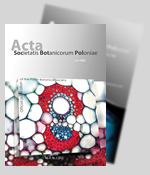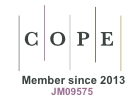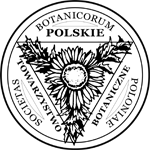Involvement of aba in flower induction of Pharbitis nil
Abstract
Flowering of plants is controlled by hormones among which both stimulators and inhibitors are present. The role of abscisic acid (ABA) in flower induction of the short day plant Pharbitis nil was shown in our experiments through exogenous applications and endogenous level determination of the hormone in cotyledons of seedlings grown under special light conditions.
The application of ABA to cotyledons or shoot apices during the first half of a 24-h long inductive night inhibits flowering. The same compound applied towards the end of or after a 14-h long subinductive night increases the number of flower buds produced by these plants.
Exposing P. nil seedlings at the beginning of a 24-h long inductive night to far red light (FR) decreases the level of endogenous abscisic acid in cotyledons and leads to flower inhibition. However, a pulse of red light (R) reversing the inhibitory effect of far red light on the flowering of P. nil increases the ABA content.
The results obtained confirm previous observations that ABA may play a dual and an important role in the regulation of floral bud formation in P. nil. The flowering occurs when the level of endogenous abscisic acid is low at the beginning and is high toward the end of the inductive night.
Keywords
Full Text:
PDFDOI: https://doi.org/10.5586/asbp.2011.003
|
|
|







